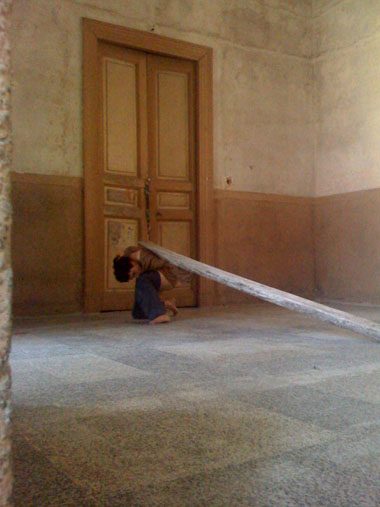Nihon jaia
Butoh Dance
The Ankoku Butō (暗 黒 舞 踏, Ankoku Butō), known in the West simply as Butō or Butoh, is the name used to refer to the different range of dance techniques created in 1950 by Kazuo Ohno and Tatsumi Hijikata who moved by the fateful bombing of Hiroshima and Nagasaki, begin searching for a new body, the body of the post-war. It is worth mentioning that during that decade, the images of some survivors filled the streets. Thus was born the Butoh, the dance towards the darkness. Usually is represented by slow, expressive and imaginative movements. There is no scenery or costumes and it is common performers to act nude or painted white. Improvisation is an essential part of this style of dance, the idea is not to think about the fact but feel it.
Activity in the Festival:
Butoh dance with Gen Shimaoka, Japanese Shamisen musician.
- First part.
- Second part.
Marianela León
Critical Artist. Since 1995, she develops the Art of Action (inspired by the work of Joseph Beuys, Yves Klein, John Cage, Nam June Paik ...) with interventions in public spaces, works that were poetic and digestive responses to everyday life situations. In those days, she was following the spirit of the Fluxus art movement, which is positioned against the traditional art object as merchandise and proclaims itself as "anti-art." In the autumn of 97, interested in the body, she introduced into the performing arts and later, in 2003, she started with butoh dance (thanks to the dancer Sua Urana). Since then she has been working intensely with butoh dancers (Tadashi Endo, Frank Van de Ven, Daisuke Yoshimoto, Moeno Wakamatsu, Sumak Koseki, Imre Thormann, Itto Morita and Mika Takeuchi). In 2007, Marianela established his own company, "Baba de Plata".
More information on Butoh:




